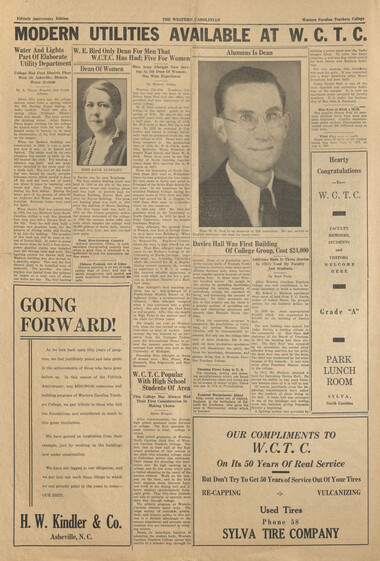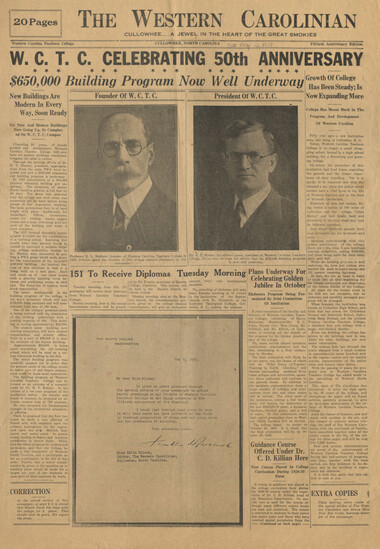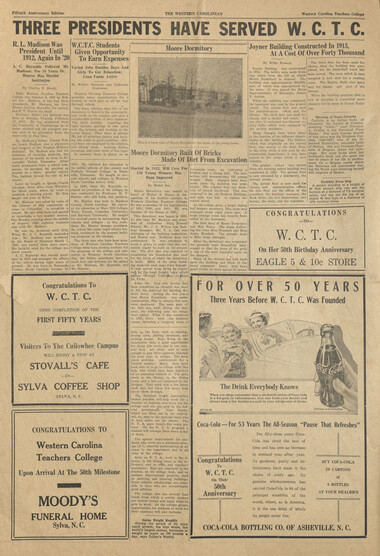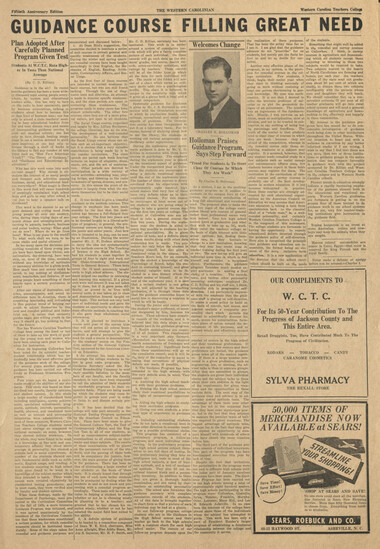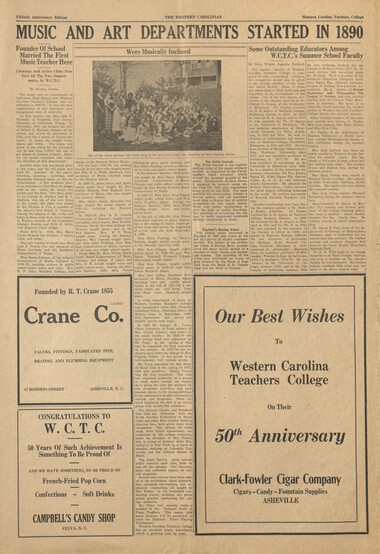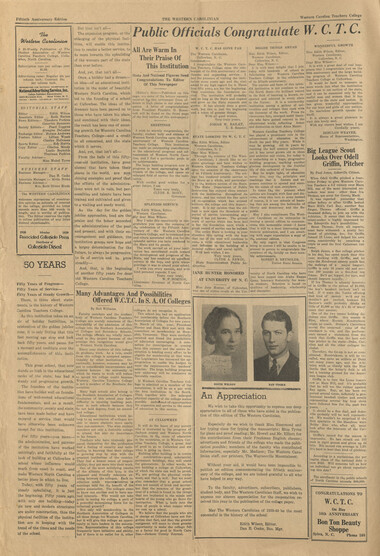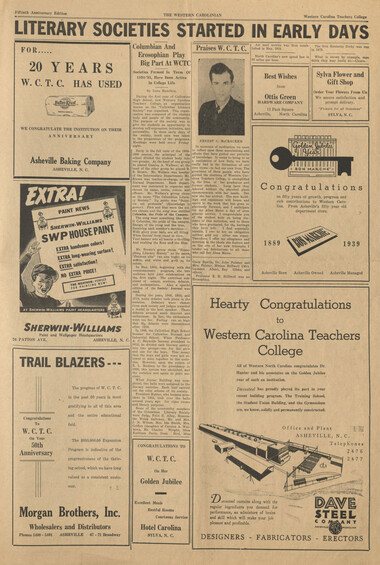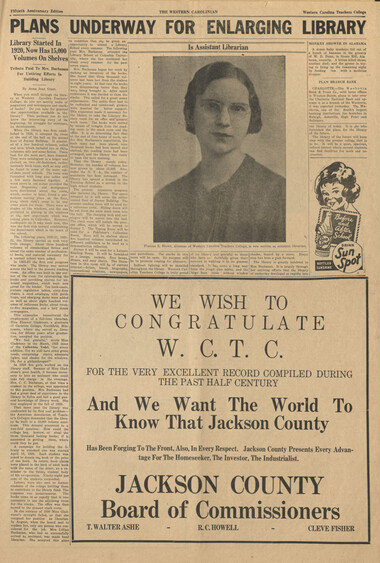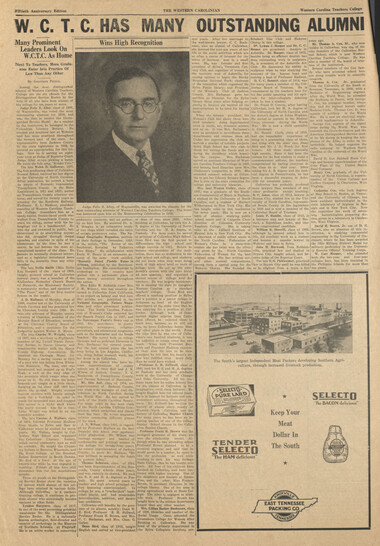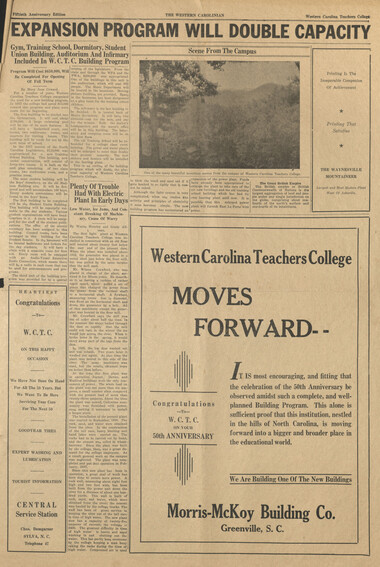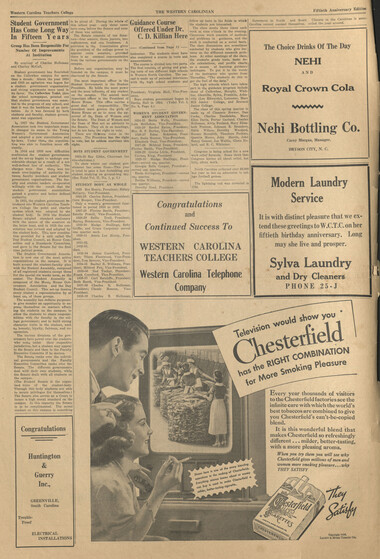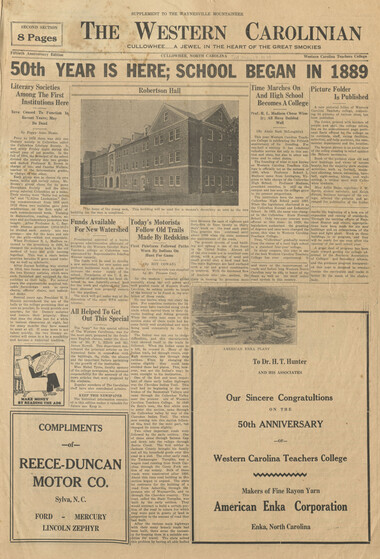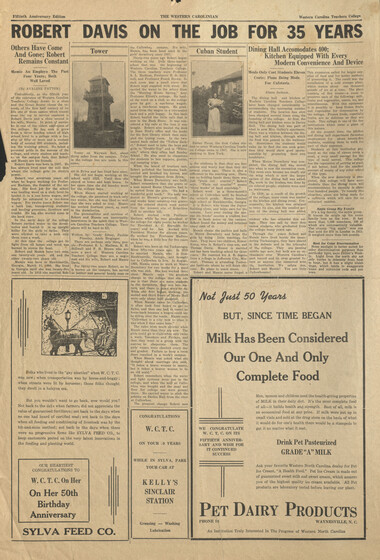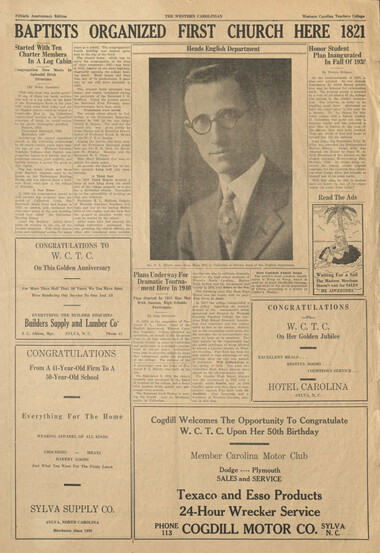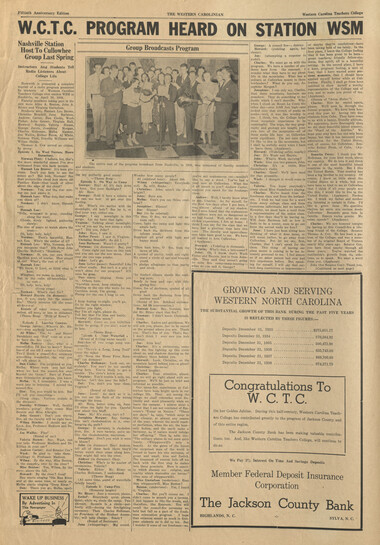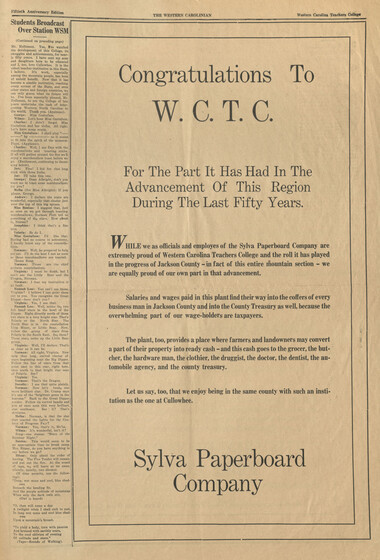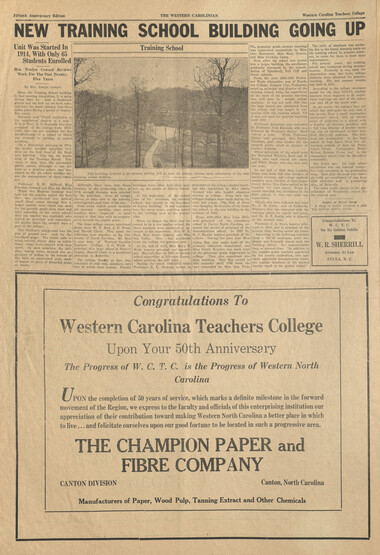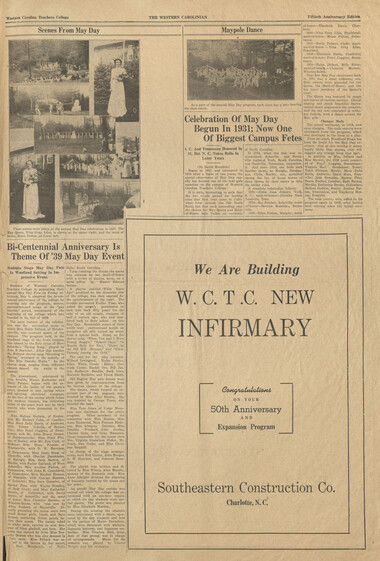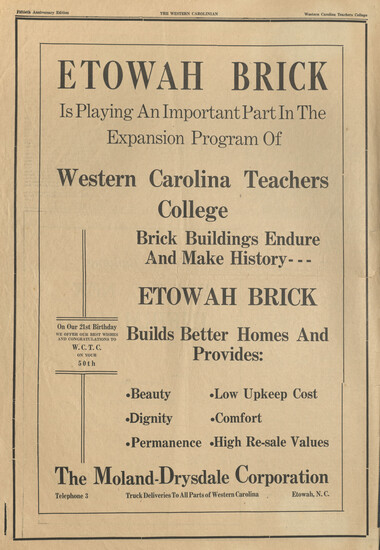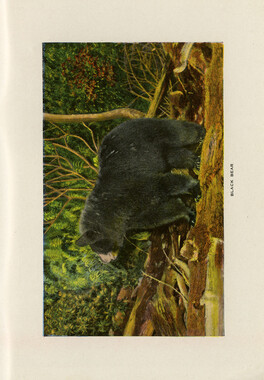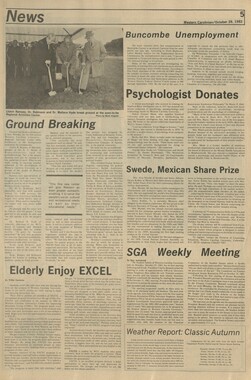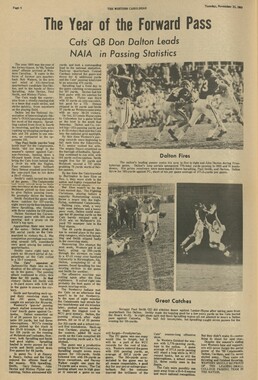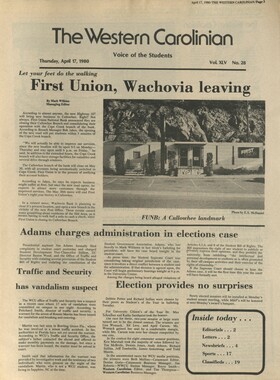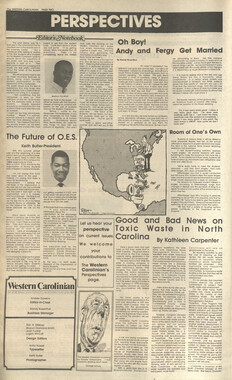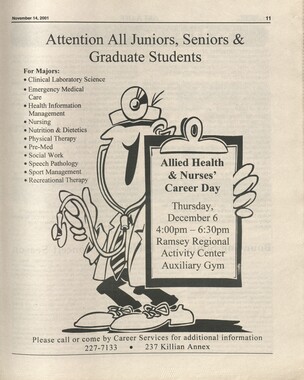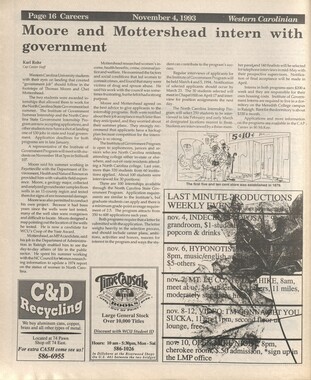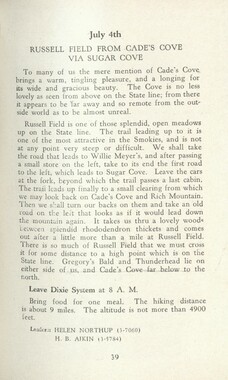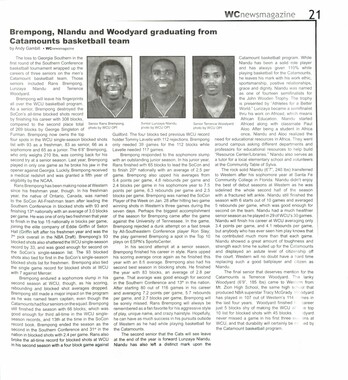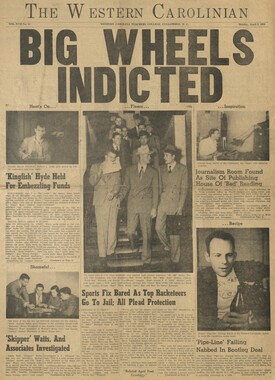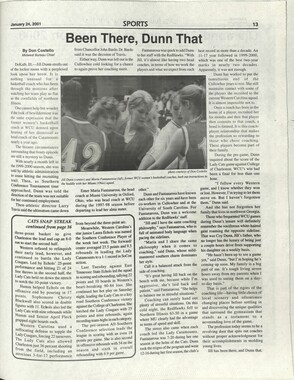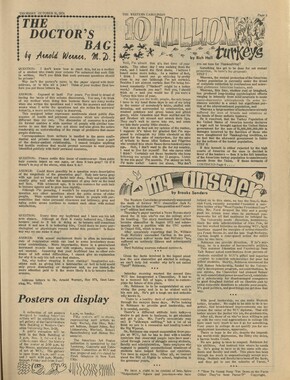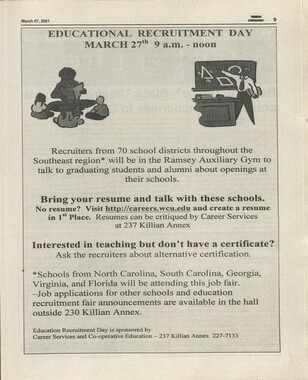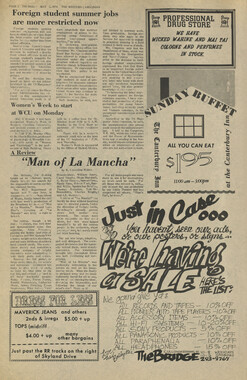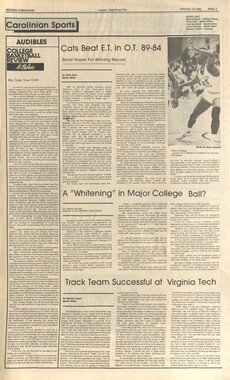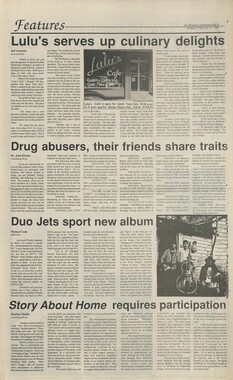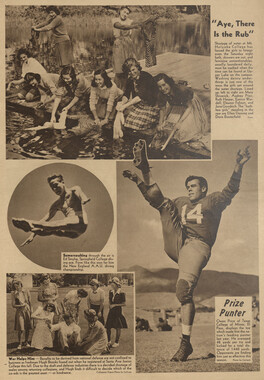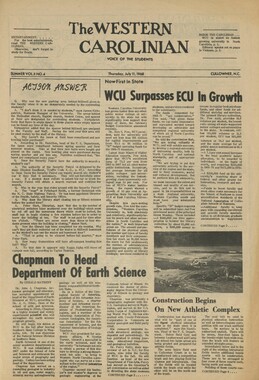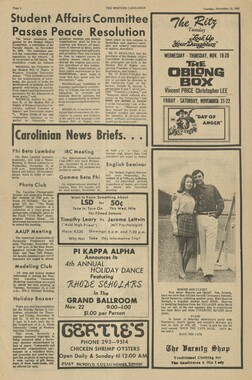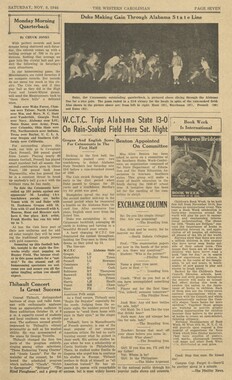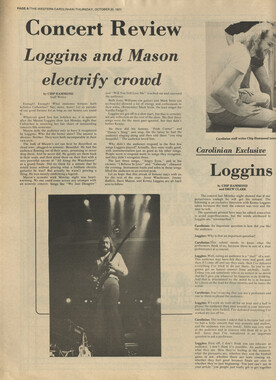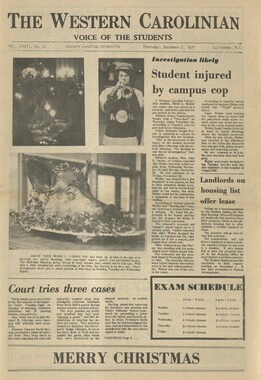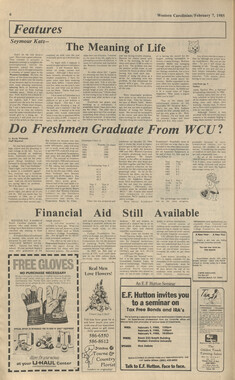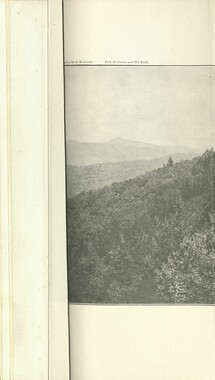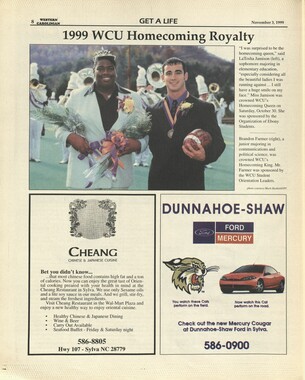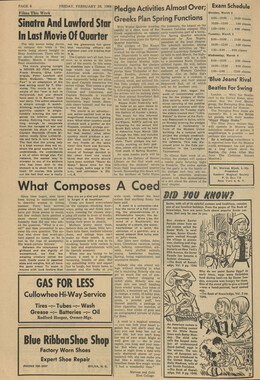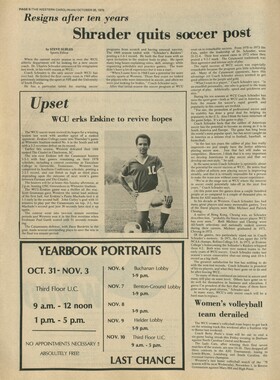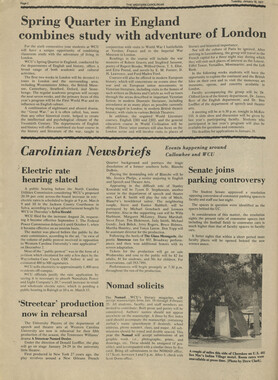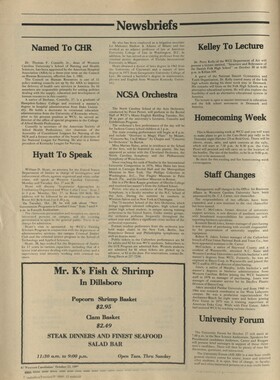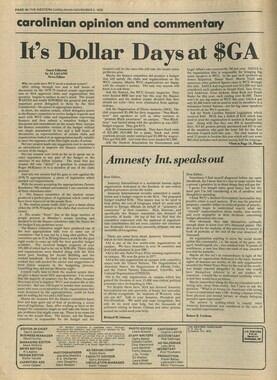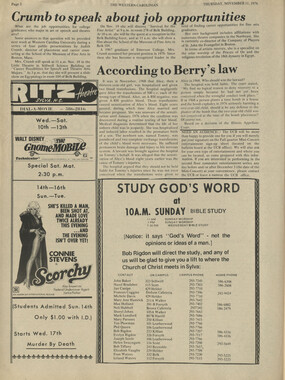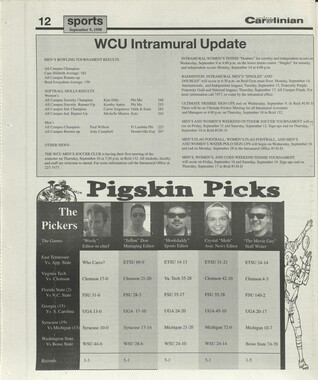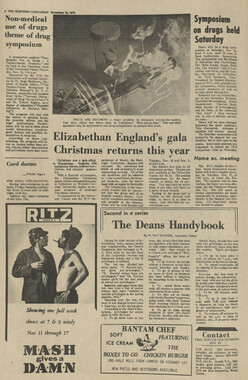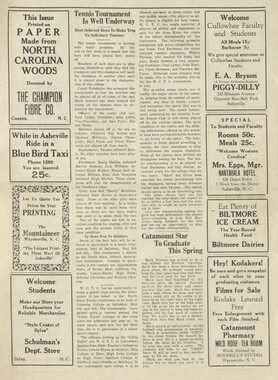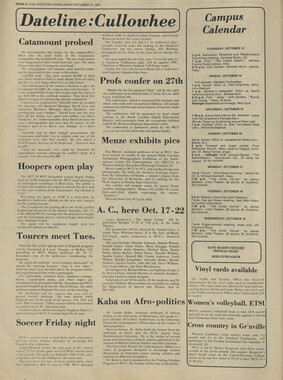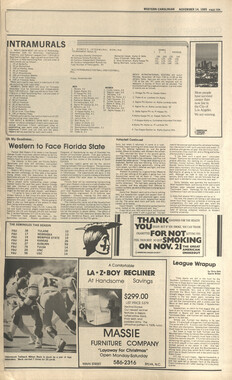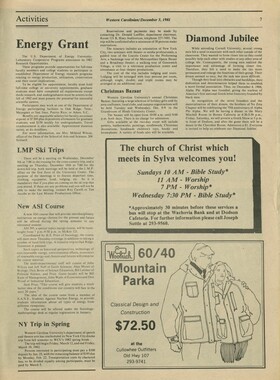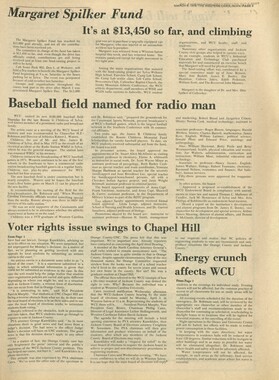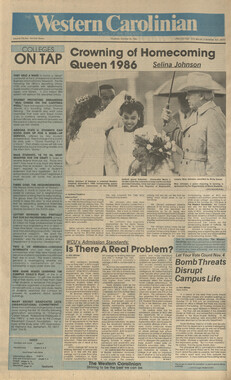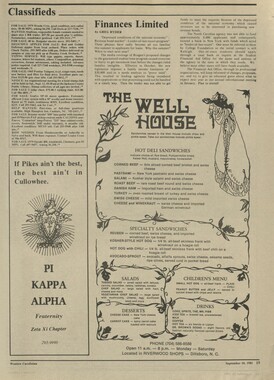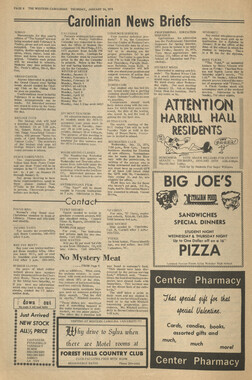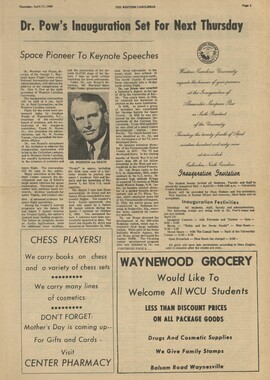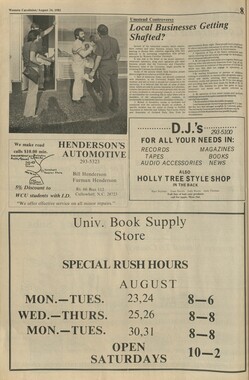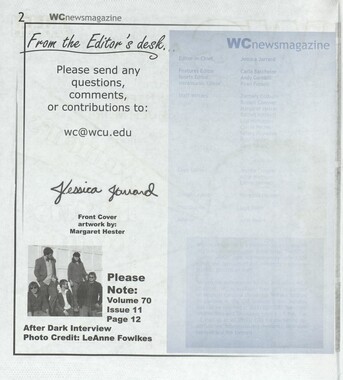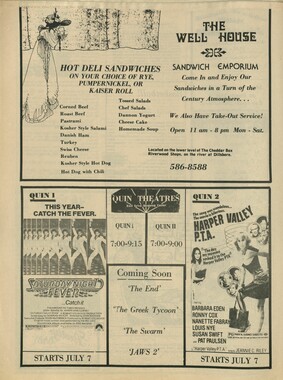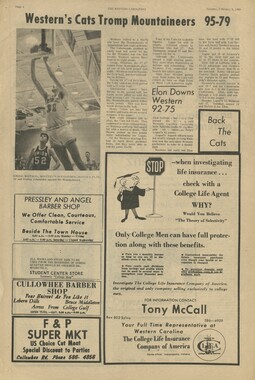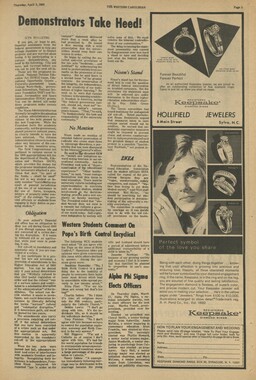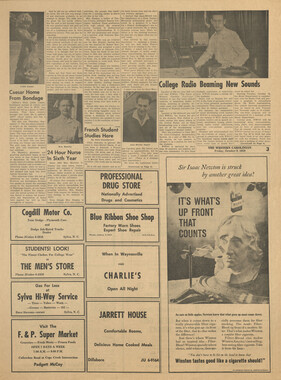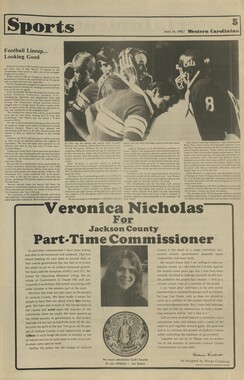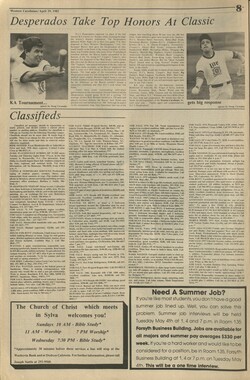Western Carolina University (20)
View all
- Canton Champion Fibre Company (2308)
- Cherokee Traditions (291)
- Civil War in Southern Appalachia (165)
- Craft Revival (1942)
- Great Smoky Mountains - A Park for America (2946)
- Highlights from Western Carolina University (430)
- Horace Kephart (941)
- Journeys Through Jackson (159)
- LGBTQIA+ Archive of Jackson County (85)
- Oral Histories of Western North Carolina (314)
- Picturing Appalachia (6873)
- Stories of Mountain Folk (413)
- Travel Western North Carolina (160)
- Western Carolina University Fine Art Museum Vitreograph Collection (129)
- Western Carolina University Herbarium (92)
- Western Carolina University: Making Memories (738)
- Western Carolina University Publications (2488)
- Western Carolina University Restricted Electronic Theses and Dissertations (146)
- Western North Carolina Regional Maps (71)
- World War II in Southern Appalachia (131)
University of North Carolina Asheville (6)
View all
- Allanstand Cottage Industries (62)
- Appalachian National Park Association (53)
- Bennett, Kelly, 1890-1974 (1463)
- Berry, Walter (76)
- Brasstown Carvers (40)
- Carver, George Washington, 1864?-1943 (26)
- Cathey, Joseph, 1803-1874 (1)
- Champion Fibre Company (233)
- Champion Paper and Fibre Company (297)
- Cherokee Indian Fair Association (16)
- Cherokee Language Program (22)
- Crowe, Amanda (40)
- Edmonston, Thomas Benton, 1842-1907 (7)
- Ensley, A. L. (Abraham Lincoln), 1865-1948 (275)
- Fromer, Irving Rhodes, 1913-1994 (70)
- George Butz (BFS 1907) (46)
- Goodrich, Frances Louisa (120)
- Grant, George Alexander, 1891-1964 (96)
- Heard, Marian Gladys (60)
- Kephart, Calvin, 1883-1969 (15)
- Kephart, Horace, 1862-1931 (313)
- Kephart, Laura, 1862-1954 (39)
- Laney, Gideon Thomas, 1889-1976 (439)
- Masa, George, 1881-1933 (61)
- McElhinney, William Julian, 1896-1953 (44)
- Niggli, Josephina, 1910-1983 (10)
- North Carolina Park Commission (105)
- Osborne, Kezia Stradley (9)
- Owens, Samuel Robert, 1918-1995 (11)
- Penland Weavers and Potters (36)
- Roberts, Vivienne (15)
- Roth, Albert, 1890-1974 (142)
- Schenck, Carl Alwin, 1868-1955 (1)
- Sherrill's Photography Studio (2565)
- Southern Highland Handicraft Guild (127)
- Southern Highlanders, Inc. (71)
- Stalcup, Jesse Bryson (46)
- Stearns, I. K. (213)
- Thompson, James Edward, 1880-1976 (226)
- United States. Indian Arts and Crafts Board (130)
- USFS (683)
- Vance, Zebulon Baird, 1830-1894 (1)
- Weaver, Zebulon, 1872-1948 (58)
- Western Carolina College (230)
- Western Carolina Teachers College (282)
- Western Carolina University (2005)
- Western Carolina University. Mountain Heritage Center (18)
- Whitman, Walt, 1819-1892 (10)
- Wilburn, Hiram Coleman, 1880-1967 (73)
- Williams, Isadora (3)
- Cain, Doreyl Ammons (0)
- Crittenden, Lorraine (0)
- Rhodes, Judy (0)
- Smith, Edward Clark (0)
- Appalachian Region, Southern (2569)
- Asheville (N.C.) (1923)
- Avery County (N.C.) (26)
- Blount County (Tenn.) (195)
- Buncombe County (N.C.) (1672)
- Cherokee County (N.C.) (283)
- Clay County (N.C.) (555)
- Graham County (N.C.) (236)
- Great Smoky Mountains National Park (N.C. and Tenn.) (519)
- Haywood County (N.C.) (3569)
- Henderson County (N.C.) (70)
- Jackson County (N.C.) (4909)
- Knox County (Tenn.) (35)
- Knoxville (Tenn.) (13)
- Lake Santeetlah (N.C.) (10)
- Macon County (N.C.) (420)
- Madison County (N.C.) (215)
- McDowell County (N.C.) (39)
- Mitchell County (N.C.) (132)
- Polk County (N.C.) (35)
- Qualla Boundary (982)
- Rutherford County (N.C.) (76)
- Swain County (N.C.) (2182)
- Transylvania County (N.C.) (270)
- Watauga County (N.C.) (12)
- Waynesville (N.C.) (86)
- Yancey County (N.C.) (72)
- Aerial Photographs (3)
- Aerial Views (60)
- Albums (books) (4)
- Articles (1)
- Artifacts (object Genre) (228)
- Bibliographies (1)
- Biography (general Genre) (2)
- Cards (information Artifacts) (38)
- Clippings (information Artifacts) (191)
- Copybooks (instructional Materials) (3)
- Crafts (art Genres) (622)
- Depictions (visual Works) (21)
- Design Drawings (1)
- Drawings (visual Works) (185)
- Envelopes (73)
- Exhibitions (events) (1)
- Facsimiles (reproductions) (1)
- Fiction (general Genre) (4)
- Financial Records (12)
- Fliers (printed Matter) (67)
- Glass Plate Negatives (381)
- Guidebooks (2)
- Internegatives (10)
- Interviews (815)
- Land Surveys (102)
- Letters (correspondence) (1013)
- Manuscripts (documents) (618)
- Maps (documents) (177)
- Memorandums (25)
- Minutes (administrative Records) (59)
- Negatives (photographs) (6090)
- Newsletters (1290)
- Newspapers (2)
- Notebooks (8)
- Occupation Currency (1)
- Paintings (visual Works) (1)
- Pen And Ink Drawings (1)
- Periodicals (193)
- Personal Narratives (10)
- Photographs (12976)
- Plans (maps) (1)
- Poetry (5)
- Portraits (4568)
- Postcards (329)
- Programs (documents) (181)
- Publications (documents) (2440)
- Questionnaires (65)
- Relief Prints (26)
- Sayings (literary Genre) (1)
- Scrapbooks (282)
- Sheet Music (2)
- Slides (photographs) (402)
- Songs (musical Compositions) (2)
- Sound Recordings (796)
- Specimens (92)
- Speeches (documents) (18)
- Tintypes (photographs) (8)
- Transcripts (322)
- Video Recordings (physical Artifacts) (23)
- Text Messages (0)
- A.L. Ensley Collection (275)
- Appalachian Industrial School Records (7)
- Appalachian National Park Association Records (336)
- Axley-Meroney Collection (2)
- Bayard Wootten Photograph Collection (20)
- Bethel Rural Community Organization Collection (7)
- Blumer Collection (5)
- C.W. Slagle Collection (20)
- Canton Area Historical Museum (2110)
- Carlos C. Campbell Collection (462)
- Cataloochee History Project (64)
- Cherokee Studies Collection (4)
- Daisy Dame Photograph Album (5)
- Daniel Boone VI Collection (1)
- Doris Ulmann Photograph Collection (112)
- Elizabeth H. Lasley Collection (1)
- Elizabeth Woolworth Szold Fleharty Collection (4)
- Frank Fry Collection (95)
- George Masa Collection (173)
- Gideon Laney Collection (452)
- Hazel Scarborough Collection (2)
- Hiram C. Wilburn Papers (28)
- Historic Photographs Collection (236)
- Horace Kephart Collection (861)
- Humbard Collection (33)
- Hunter and Weaver Families Collection (1)
- I. D. Blumenthal Collection (4)
- Isadora Williams Collection (4)
- Jesse Bryson Stalcup Collection (47)
- Jim Thompson Collection (224)
- John B. Battle Collection (7)
- John C. Campbell Folk School Records (80)
- John Parris Collection (6)
- Judaculla Rock project (2)
- Kelly Bennett Collection (1482)
- Love Family Papers (11)
- Major Wiley Parris Civil War Letters (3)
- Map Collection (12)
- McFee-Misemer Civil War Letters (34)
- Mountain Heritage Center Collection (4)
- Norburn - Robertson - Thomson Families Collection (44)
- Pauline Hood Collection (7)
- Pre-Guild Collection (2)
- Qualla Arts and Crafts Mutual Collection (12)
- R.A. Romanes Collection (681)
- Rosser H. Taylor Collection (1)
- Samuel Robert Owens Collection (94)
- Sara Madison Collection (144)
- Sherrill Studio Photo Collection (2558)
- Smoky Mountains Hiking Club Collection (616)
- Stories of Mountain Folk - Radio Programs (374)
- The Reporter, Western Carolina University (510)
- Venoy and Elizabeth Reed Collection (16)
- WCU Gender and Sexuality Oral History Project (32)
- WCU Mountain Heritage Center Oral Histories (25)
- WCU Oral History Collection - Mountain People, Mountain Lives (71)
- WCU Students Newspapers Collection (1920)
- Western North Carolina Tomorrow Black Oral History Project (69)
- William Williams Stringfield Collection (2)
- Zebulon Weaver Collection (109)
- African Americans (390)
- Appalachian Trail (35)
- Artisans (521)
- Cherokee art (84)
- Cherokee artists -- North Carolina (10)
- Cherokee language (21)
- Cherokee pottery (101)
- Cherokee women (208)
- Church buildings (189)
- Civilian Conservation Corps (U.S.) (111)
- College student newspapers and periodicals (2009)
- Dams (107)
- Dance (1023)
- Education (222)
- Floods (61)
- Folk music (1015)
- Forced removal, 1813-1903 (2)
- Forest conservation (220)
- Forests and forestry (1184)
- Gender nonconformity (4)
- Great Smoky Mountains National Park (N.C. and Tenn.) (181)
- Hunting (45)
- Landscape photography (25)
- Logging (119)
- Maps (83)
- Mines and mineral resources (8)
- North Carolina -- Maps (18)
- Paper industry (38)
- Postcards (255)
- Pottery (135)
- Railroad trains (72)
- Rural electrification -- North Carolina, Western (3)
- School integration -- Southern States (2)
- Segregation -- North Carolina, Western (5)
- Slavery (5)
- Sports (452)
- Storytelling (243)
- Waterfalls -- Great Smoky Mountains (N.C. and Tenn.) (66)
- Weaving -- Appalachian Region, Southern (280)
- Wood-carving -- Appalachian Region, Southern (328)
- World War, 1939-1945 (173)
Western Carolinian Volume 07 50th Anniversary
Item
Item’s are ‘child’ level descriptions to ‘parent’ objects, (e.g. one page of a whole book).
-
-
Fiftieth Anniversary Edition THE WESTERN CAROLINIAN Western Carolina Teachers College MODERN UTILITIES AVAILABLE AT W. C. T. C. Water And Lights Part Of Elaborate Utility Department College Had First Electric Plant West Of Asheville; Modern Water System Hy a. Wayne Kensley and Grady Allman. About ' the college carried water from a spring, called the OKI Spring, in cedar bi Elliott's house now stands. The boys carried the drinking water. After Robert Davis began working for the college he hauled water from the river. He hauled water in barrels to be used in construction of the first buildings on the campus. When the Madison building was constructed in 1904, it was a problem how it was to be bested and lighted. The water used in its construction was carried in pails up the hill nearest the river. For heating, a chimney was built and one large stove installed in the room used for a study hall. The rest of the building was heated by small, portable kerosene stoves, which served to keep off the cold but were not of much use when it came to warming cold hands and feet. They were used during the first winter. During the latter part of the session of 1904-'05 an Andrews Hot Water system was installed. Kerosene lamps were used for lights. When Davies Hall was constructed in 1909, the Lee Brothers from South Carolina drilled a well five hundred > feet deep just below Davies Hall on the hill. Near the well they built a storage and pressure tank, for the purpose of storing water and forcing it up into the building. The remains of this tank can still be seen at the end of Davies Hall. In order to pump the water from the well, a four-horsepower gasoline engine was installed near the storage tank and well. The lighting system for Davies Hall and Madison building was also a gasoline engine. This was the first electric plant to be installed west of Asheville. The gasoline for these engines was hauled from the railroad by wagon at a total cost of about one dollar per day. The first heating W. E. Bird Only Dean For Men That W.C.T.C. Has Had; Five For Womenj Dean Of Women MISS ANNE ALBRIGHT in Davies was by open fireplaces. The first central heating plant was built in 1910 at the site of the present power house and heating plant, and was used to provide heat for Madison Building, Davies Hall, and later for Joyner Building. The present heating plant was built in 1921 after the addition of Moore Building. The first water tank was built in 1915 on the Cowan property within the present watershed of the college. In 1923 the present water taJik was built which supplies the college with 65,000 gallons of water daily, carried through five, four, one and one-half inch pipes. Good Bice-Urowing Country Anhwei province, China, is such excellent rice-growing country that when a good crop is obtained it is sufficient to last the population for five years. Chinese Painting Art of Lines Chinese painting is an art of lines, rather than of color, and one in which imagination and poetry are more important than technical details. GOING FORWARD! As we look back upon fifty years of progress, we feel justifiably proud and take pride in the achievements of those who have gone before us. In this season of the Fiftieth Anniversary, and $650,000.00 expansion and building program of Western Carolina Teachers College, we pay tribute to those who laid the foundations and contributed so much to this great institution. We have gained an inspiration from their example, just by working on the buildings now under construction. We have not lagged in our obligation, and we put into our work those things to which we can proudly point in the years to come— OUR BEST. H. W. Kindle. & Co. Miss Anne Albright Now Serving As 5th Dean Of Women; Has Wide Experience By Mildred Atkins lege has had only one dean of men. i in Bird took this office, the entire college. w. K. Bird enti low hoe in the eighth grade in the 1 one and oars here, and then taught Mr. Bird went to Mars Hill for a half year, In 1918 he returned to Cullowhee and stayed in COlle( ually until he graduated from the two year college in 1915. There were only three members in the graduating 115, Dr. H. S. Clark, Ashe- ille, professor Wood, Principal of Angier High School, and I). Bird. These three went to the University of North Carolina together where Dean Bird received the A. B. Degree in 1917. From the University of North Carolina Dean Bird went to Wilkesboro where he was principal for two years. then came to Sylva and acted as Principal of the Sylva High School for ne year. In the meantime he had ttended Peabody College during the summer terms of'litis, 1919, and 1920 and had earned his M. A. I I 1920 Dean Bird came to Cullowhei where he has remained. In 1924 and 1925 Mr. Bird did graduate work at the University of North Carolina. In 1933 he went to Duke University, where he taught freshman English. Anne Albright, the present Dean of Women, was born in Kowan County on a farm near Salisbury. When she was very young her parents moved to Waynesville, Haywood County, where she went to high school for one year. Then Miss Albright went four the Women's College of the l University of North Carolina. Later nt to Columbia University where she received her M. A. Degree. During several summers sh(. worked supervisor in Y. W. C. A. camps. She received valuable experience in rk which won for her :i position as Assistant Director of a Hartford camp. Miss Albright's first teaching position was as lady-principal of a Presbyterian Mission School in Al- leghaney Couty, a co-educational initiation. Miss Albright resigned when it was converted into a girls' school. She said that she liked boys well as girls. After this she taught at High Point in the eastern part of the state for fifteen years. taught one year at Waynesville when she was invited to come to Cullowhee as dean of women. Last she was honored by an invitation from the Carnegie Endowment for International Peace to attend the summer session on Inter- tional Law which was held at the University of Michigan. Preceding Miss Albright as deans women were Mrs. Posey, Miss Denmark, Miss Edgeworth, and Miss Brackett. building a power plant over the Tuck- aseegee River. To solve the water situation, a well was dug which served for both Davies and Madison buildings. For two sessions this dormitory for girls. It was converted into a boys' dormitory after Moore Dormitory had been built. i vies Hall is one of the led and attractive builders on the campus. It is now an house occupied by faculty members. It is under the hostess- ship of Mrs. John S. Seymour, Blue Eyes at Birth a Myth The popular theory that all newborn children have blue eyes has been disproved. Careful examinations under modern illumination revealed almost 200 different hues in their eyes. When Flag >• -^rs There were :« stars in the United States flag from July 4. 1877. to July 4, 1890 Dean W. K. Bird is an alumnus of this institution. He has s English instructor and dean for many years. Davies Hall Was First Building Of College Group, Cost $24,000 Asheville, N.C. W.C.T.C. Popular With High School Students Of Area This College Has Always Had Their First Consideration In Making Choice Sallie Hooper. After commencement, the average high school graduate looks forward to college. The first question he must consider is what college to attend. High school graduates of Western North Carolina think first of Western Carolina Teachers College. The fact, that at least half of the high school graduates of this section of the state who attended college come to Cullowhee, proves this statement. Their reason for choosing this institution are: Its high ranking as a college, and its low costs which puts ' a higher education in the reach of the poorest student. Work on the campus, on the farm, and in the book store employs about thirteen boys; and work in the dining hall and library employs approximately forty- eight girls. Thus fifty-four students are able to partially or entirely work their way through college. The athletic program at Western Carolina attracts many boys. The lar,gie variety .of minerfelis, plants, birds, and animals native to this section is a distinct advantage to the science department and attracts many students who are interested in studying science. Beside its immediate function of educating the student body, Western Carolina Teachers College serves this section in a broader way through its alumni. Some of its graduates serve irious parts of Western North teachers; some make more efficient business men; many become more capable parents because of their training here. In these ways Western Carolina serves the people in this section by spreading knowledge, increasing the earning capacity of individuals, raising the standard of living, and decreasing the amount of illiteracy. No other mountain section in this country can lay claim to greater medium of spreading culture and eliminating ignorance and poverty than Western North Carolina. When the expansion program is completed, the possibilities of Cullowhee for serving Western North Carolina will be immeasurably increased. Not only can the college take j care of more students, but it can send out more graduates—graduates who will disseminate the spirit, the force for knowledge, democracy, and greater living that is Western Carolina Teachers College. Cleaning Firms Long in U. S. The cleaning, dyeing and pressing establishments which are found in all American cities and towns are by no means of recent origin. There was one in 1713 in Philadelphia. Founded Westminster Abbey Islip, seven miles out of Oxford, England, is the birthplace of Edward the Confessor, who gave the town to Westminster abbey which he founded. Additions Made It Three Stories In 1913; Used Hy Faculty And Students By Boyd Poole. After Western Carolina Teachers College was well established, it became necessary to build a dormitory, Mr. Robert L. Madison purchased three acres of land from T. C. Davis, father of Robert Davis, the present janitor, for one hundred dollars In 1909 the state appropriated $14,000, which was supplanted by $10,000 for the building of Davies Hall. The new building was named for Judge Davies, a leading citizer the community at that time, and chairman of the Board of Trustees. In 1913 the building had three stories. The first floor was occupied by the caretakers; the second story afforded living quarters for the girls; the third floor was used by the boys. The third was condemned by the state because of fire hazards. It was torn away after President Hunter came to the college. In 1913, Mr. Madison obtained a fund for furnishing Davies Hall. He proved his ability to buy good furniture because some of it is still in use, Of course, practically from the beginning, improvements were added for the comfort of those living in the hall. A study hall was arranged in one of the buildings and sewing room was installed, giving Domestic Science a beginning. A lighting system was provided by Hearty Congratulations —To— W. G. T. C. FACULTY MEMBERS, STUDENTS and VISITORS WELCOME HERE Grade "A" PARK LUNCH ROOM SYLVA, North Carolina OUR COMPLIMENTS TO W.C.T.C On Its 50 Ye&rs Of Real Service But Don't Try To Get 50 Years of Service Out Of Your Tires RE-CAPPING -:- VULCANIZING Used Tires SYLVA TIRE COMPANY
Object
Object’s are ‘parent’ level descriptions to ‘children’ items, (e.g. a book with pages).
-
The Western Carolinian is Western Carolina University’s student-run newspaper. The paper was published as the Cullowhee Yodel from 1924 to 1931 before changing its name to The Western Carolinian in 1933.
-
